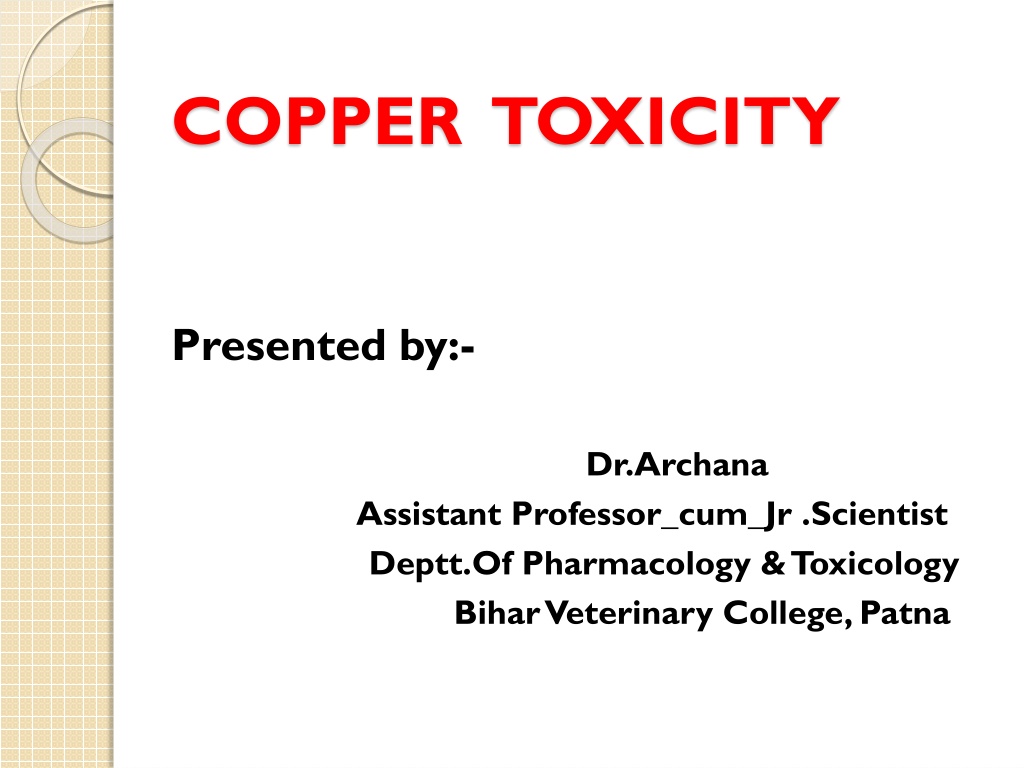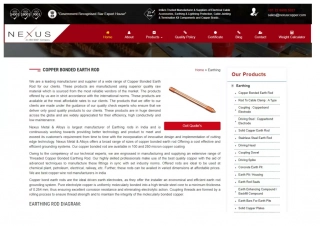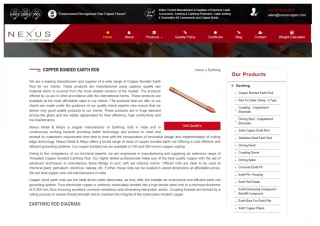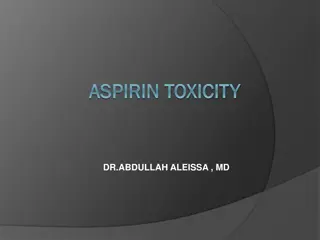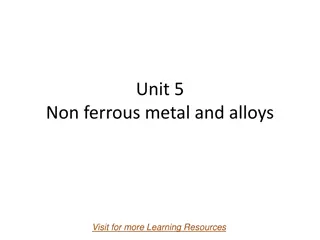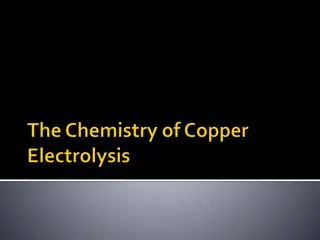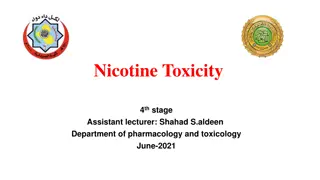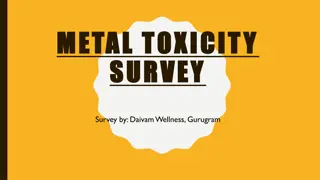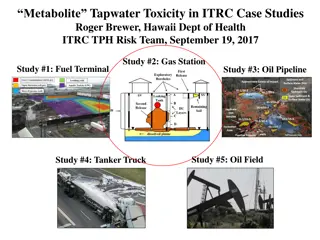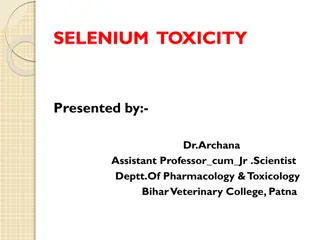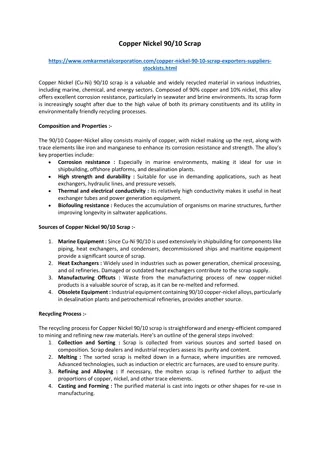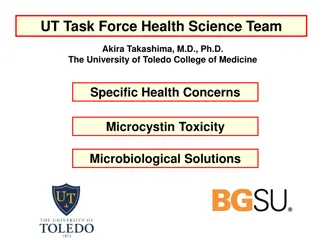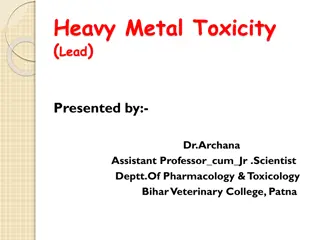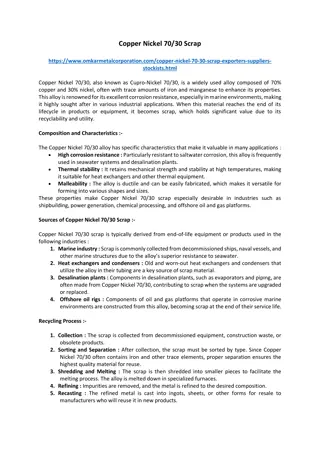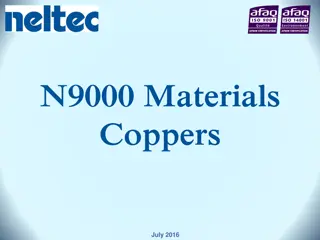Understanding Copper Toxicity in Veterinary Science
This presentation by Dr. Archana explores the terminology, sources, toxicokinetics, mechanisms of toxicity, clinical signs, and treatment options related to copper toxicity in animals. It discusses how copper absorption, retention, and elimination are affected by dietary factors, leading to copper accumulation and potential harm in the liver, erythrocytes, and other tissues. The toxic effects of excess copper include hepatocyte damage, hemolysis, and renal dysfunction. Additionally, the presentation highlights the impact of copper on iron absorption and the development of anemia in swine.
Download Presentation

Please find below an Image/Link to download the presentation.
The content on the website is provided AS IS for your information and personal use only. It may not be sold, licensed, or shared on other websites without obtaining consent from the author. Download presentation by click this link. If you encounter any issues during the download, it is possible that the publisher has removed the file from their server.
E N D
Presentation Transcript
COPPER TOXICITY Presented by:- Dr.Archana Assistant Professor_cum_Jr .Scientist Deptt.Of Pharmacology & Toxicology Bihar Veterinary College, Patna
Content of chapter * Terminology * Sources * Toxicokinetic * Mechanism of toxicity * Clinical Signs * Treatment
Source :- Ingestion of foliage as pasture grass spread with CuSo4 which may accumulate up to 200 ppm of Cu from soil in the plant body. Perolong ingestion of certain plants which are hepatotoxic with normal amount of Cu and low level of Mo. (Cu accumulator plants Heliotropium Europeum, Senecio sp., Trifolium subterraneum) Accidental ingestion or administration of excessive amount of soluble Cu-salts in mineral mixture or ration. Copper-Sulphate is used as food bath, fungicide, algaecide and anthelimintic ; its indiscriminate use forma longer period may cause toxicity.
Toxicokinetic After oral intake, copper is absorbed through intestine and then enters a carries state in the blood. In the blood , it is present in the erythrocyte as well as serum. Liver removes most of the copper from the blood, but other soft tissues also store some copper. The liver excrete copper in the bile but it gets reabsorbed from the intestine.
Continue... Low MO and Sulphate in the diet increases copper absorption and its retention in the liver and its retention in the liver. In the ruminant, copper has a complex interrelationship with dietary molybdenum and sulfur which, when present in excess, will both decrease copper absorption and inhibit copper utilization. Copper is eliminated from the body in bile urine and through faeces.
Mechanism of toxicity Excessive accumulation of Copper occurs in hepatic mitochondria and lysosome which cause progressive hepatocyte damage and cellular degenration or necrosis. Main dichlorolipoyl inhibition of pyruvate dehydrogenase vsystem this results in disturbance in the energy metabolism of the cell. enzyme inhibition dehydrogenase, is thought which to leads be of to Excess copper in the blood causes weakening of erythrocyte membrane increasing there fragility leading to hemolysis. Oxidation of hemoglobin by copper leads to methemoglobin, which is unable to carry oxygen. This may aggravate the hemolytic crisis.
Continue... There is also oxidation of haemoglobin by copper which cannot transport the oxygen and this may aggravate the haemolytic crisis. During haemolytic crisis the kidney fails as result of clogging and renal tubule with haemoglobin, this is followed by renal tubular and glomerular necrosis. In swine in addition to the above feature copper inhibit the absorption Fe from the GIT leading to Fe-Deficiency anaemia.
Clinical Sign Acute Toxicity:- Severe gastroenteritis, abdominal pain , diarrhoea, anorexia, dehydration and shock. Faeces may appear deep green in colour due to presence of Cu-chlorophyl compound.
Chronic Toxicity:- The sudden onset of clinical signs in chronic copper poisoning is associated with the haemolytic crisis. Signs in affected animals include generalised icterus, hemoglobinuria ,methemoglobinemia, hemoglobinemia, depression, lethargy, weakness, recumbency, anorexia, thirst, dyspnea, pale mucous membranes Several days or weeks before the hemolytic crisis, liver enzymes, including ALT and AST, are usually increased. Severe hepatic insufficiency is responsible for death.
P.M finding Pale yellow liver Enlarged pulpy spleen Bluish black kidney (Gun metal kidney) Gall bladder is distended with thick greenish-brown bile.
Treatment Ammonium or sodium molybdate (50 500 mg) and sodium thiosulfate (250 1000 mg) should be used daily as a drench for up to 3 weeks. D-Penicillamine or Calcium versenate may be useful if administered in early stages of toxicosis. Molybdenum in the diet can be increased to 5 ppm and zinc can be supplemented at 100 ppm to reduce copper absorption. In addition, supportive care including fluid therapy and blood transfusion are beneficial.
